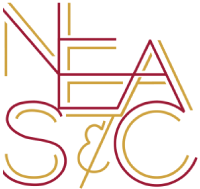Each semester, there are typically a small handful of Latin students at Maine Coast Semester. What they lack in numbers, they make up for in die-hard fanaticism. This week, Latin teacher Steven Farrand’s Semester 61 students decided to concoct a Roman feast for the semester community, and their enthusiasm was palpable in the kitchen as they cooked with Farrand, Kitchen Manager Bill Edgerton, and Cook Lesley Woodroffe.
Hard at work making Lucanian sausage under Edgerton’s watchful eye were Penelope Day (Ethical Culture Fieldston School, New York) and Sam Dutilly (Community High School of Arts & Academics, Virginia). The sausage consisted of pork from our farm mixed with salt, pepper, cumin, tarragon, parsley, and thyme.
Whipping up some libum, a bread-like honey cake, with Woodroffe were Tori Barrow (Buckingham Browne & Nichols School, Massachusetts) and Caroline Heyburn (Milton Academy, Massachusetts). Each portion of libum is supposed to have a fresh bay leaf but being a little short on fresh bay leaves in midcoast Maine in December, Woodroffe improvised: she set a bay plant (transplanted from the herb garden into a pot at the end of the summer) on the kitchen table near the bowl of dough..
Also part of the menu was “green and Baian beans.” If you don’t know what Baiain beans are, rest assured: you’re not alone. Here’s what Farrand had to say on this subject: “Baiae was a place on the Bay of Naples, a resort town (the Roman Palm Beach?). Apicius, a Roman chef who wrote a cookbook we have, talked about ‘green and Baian’ beans. Nobody knows what he meant, exactly (the Romans had neither green beans in our sense nor soybeans). Probably Baian beans were like young Italian faba [also known as fava] beans or lima beans.”
For this meal, Bill used green beans, said Farrand, “Because, I think, few people like lima beans (I don’t).” (Apologies to everyone who loves lima beans.)
















